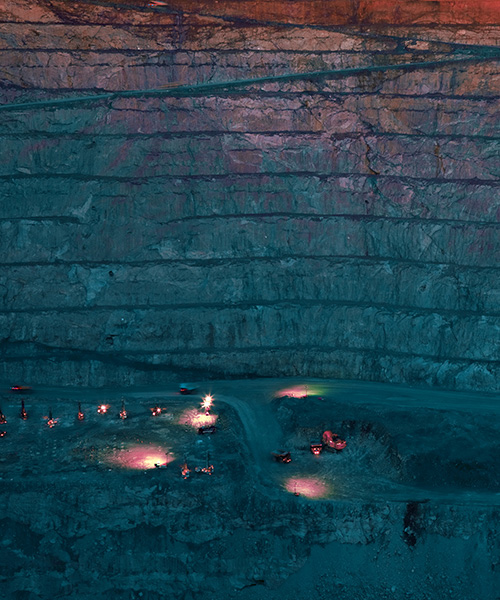June 02, 2021 • 3 min read
How can miners meet future supply shortfalls sustainably?
To reach net zero, the mining industry must cut emissions by 90% by 2050, while balancing increases to production to meet demand
“This is a challenging period for the mining industry, as it faces a wide range of social pressures, uncertainties and threats,” says Nick Bell, Global Sector Lead, Mining, Minerals and Metals. “The need to decarbonize its energy sources to reach net zero by 2050 is the most crucial, and will trigger the most extensive transformation.”
It's hard for large miners to be agile. Change across the entire mining industry will take time, as well as a lot of capital investment. How can miners ensure these investments pay back over the long term?
Energy transition materials are in demand
Taxation and subsidies are encouraging a switch to lower carbon energy around the world. This is driving an increase in the demand for minerals and metals needed for energy transition technologies such as wind turbines and batteries.
“New technologies not only help with CO2 reduction, but also boost efficiency and productivity. And as society moves to more sustainable power and transport systems, there will be a greater need for specific minerals and metals to progress this transition.”
One of the most critical metals will be copper, which is central to the production of wind turbines, large scale batteries and solar panels.
“With many miners still suffering from depleting ore grades, there will be a lot of pressure on global copper supplies in the coming years,” says Bell.
Increasing the adoption of new technologies
The mining industry is also going through its own energy transition. Miners across the world are turning to new technologies to reduce their emissions. For example, electric vehicles (EVs).
“There is huge interest in this area, and we are seeing lots of mines adopt a policy to switch all or some of their trucks to alternate energy sources such as electricity,” says Bell. “The rest of the industry is watching how these projects progress.”
Elsewhere, data and intelligent automation are also helping mining companies become more energy efficient.
“Digital is the key enabler of the scale of change that’s required,” says Bell. “For example, integrated digital solutions such as predictive analytics can help miners make operational decisions that optimize the role of renewables and achieve their net zero commitments.”
Switching to more sustainable energy sources
As the cost of renewable energy decreases, miners are evaluating the source of their energy supply, and are looking for opportunities to convert to low cost renewable options.
For example, Antofagasta has signed a new Power Purchase Agreement with ENGIE Energía Chile at its Centinela mine until 2033. Under this agreement, all the power supplied to the Centinela mine will be from renewable sources.
Many of the world’s top mining companies are investing heavily into environmental, social and governance (ESG) policies. Investment in greener technologies and decarbonization strategies are now part of long term business strategies.
Turning energy transition challenges into opportunities
Bell believes the energy transition can be profitable for mining companies if managed carefully.
“We recently worked on a large iron ore mining complex in Canaã dos Carajás, Brazil, which is an example of diesel displacement driven by the need to be more sustainable.
“This complex has an in-pit crushing and conveying system that uses conveyor belts to replace trucks, helping to reduce diesel consumption by around 70 percent. We completed the modular design and engineering for the beneficiation plant, as well as the assessment of the best materials handling options for the site.
“Because productivity is still essential, especially during times of transformation, it's crucial to invest in drafting energy transition roadmaps to explore how this transition looks at every stage,” he adds.
Proactive energy transition investments will drive better financial performance
Research by GlobalData shows that ‘companies that embrace all three elements of sustainability will outperform their peers. CEOs that are too slow to improve their company’s approach to sustainability will see a drop in profits far sooner than they ever imagined.’
The same report highlighted that the best performing firms in the industry in this respect were ‘pioneering the use of renewable energy, battery powered vehicles and setting aggressive greenhouse gas reduction targets.’

“Mining organizations are critical players in building a net zero future,” continues Bell. “But the window to take advantage of the opportunities is limited. The time to act is now.”


